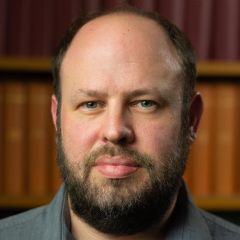
Research groups
Colleges
Collaborators
-
Heidi Johansen-Berg
Pro-Vice Chancellor (Strategic Initiatives)
-
Andrew Sharott
Professor of Neuroscience
-
Tim Denison
Royal Academy of Engineering Chair in Emerging Technologies
-
Melanie Fleming
Associate Professor & Academic Lead for Patient Involvement and Public Engagement
-
Sarosh Irani
Collaborator, Oxford Autoimmune Neurology Group
Charlotte J Stagg
MRCP DPhil
Professor of Human Neurophysiology
- Wellcome Trust Senior Research Fellow
- Associate Director, Oxford Centre for Integrative Neuroimaging
- Beale Fellow in Medicine, St Hilda's College
Physiological mechanisms of motor learning and recovery
I head the Physiological Neuroimaging Group.
My primary research interest is in understanding how the brain adapts to new challenges, focusing in particular in the physiological processes underlying the learning of new motor skills and in the recovery of motor function after stroke.
We take a multimodal approach to answer these questions, using advanced MR approaches, MEG, non-invasive brain stimulation and pharmacological agents. Our multidisciplinary team works on a wide variety of projects, with the ultimate aim of developing novel therapies to improve function in a range of neurological disorders.
We welcome enquires from potential DPhil (PhD) students and Postdoctoral Fellows - please email me.
For more details of our group's research please see our website.
Key publications
-
β-Oscillations Reflect Recovery of the Paretic Upper Limb in Subacute Stroke.
Journal article
Tang C-W. et al, (2020), Neurorehabil Neural Repair, 34, 450 - 462
-
Increasing human motor skill acquisition by driving theta-gamma coupling.
Journal article
Akkad H. et al, (2021), Elife, 10
-
Ramped V1 transcranial ultrasonic stimulation modulates but does not evoke visual evoked potentials.
Journal article
Nandi T. et al, (2023), Brain Stimul, 16, 553 - 555
-
Repeated unilateral handgrip contractions alter functional connectivity and improve contralateral limb response times.
Journal article
Andrushko JW. et al, (2023), Sci Rep, 13
-
A Mechanistic Link from GABA to Cortical Architecture and Perception
Journal article
Kolasinski J. et al, (2017), Current Biology, 27, 1685 - 1691.e3
-
Ipsilesional anodal tDCS enhances the functional benefits of rehabilitation in patients after stroke
Journal article
Allman C. et al, (2016), Science Translational Medicine, 8, 330re1 - 330re1
Recent publications
-
Dual-site beta transcranial alternating current stimulation during a bimanual coordination task modulates functional connectivity between motor areas
Journal article
Gann MA. et al, (2025), Brain Stimulation, 18, 1566 - 1578
-
Personalizing transcranial electrical stimulation.
Journal article
Van Hoornweder S. et al, (2025), Trends Neurosci
-
The Effects of Theta-Gamma Peak Stimulation on Sensorimotor Learning during Speech Production
Journal article
Demirel B. et al, (2025), Neurobiology of Language, 1 - 39
-
Corrigendum to “Relating TMS measures of GABAergic and Cholinergic signalling to attention” [Brain Stimul 18 (1) (2025) 507–508, (S1935861X24010489), (10.1016/j.brs.2024.12.853)]
Journal article
Frangou P. et al, (2025), Brain Stimulation, 18
-
Gamma activation spread reflects disease activity in amyotrophic lateral sclerosis
Journal article
Trubshaw M. et al, (2025), Clinical Neurophysiology, 2110823 - 2110823
-
Differential beta and gamma activity modulation during unimanual and bimanual motor learning.
Journal article
Wu M. et al, (2025), J Neurosci
-
Human motor cortical gamma activity relates to GABAergic intracortical inhibition and motor learning
Journal article
Zich C. et al, (2025), Imaging Neuroscience, 3
-
Response to 'Safety Considerations for Transcranial Ultrasound Stimulation: A Comment on Nandi et al.'.
Journal article
Nandi T. et al, (2025), Brain Stimul
-
7 Tesla magnetic resonance spectroscopy estimates of GABA concentration relate to physiological measures of tonic inhibition in the human motor cortex.
Journal article
Paparella I. et al, (2025), J Physiol
-
Baclofen, a GABABreceptor agonist, impairs motor learning in healthy people and changes inhibitory dynamics in motor areas
Preprint
Grigoras I-F. et al, (2025)







